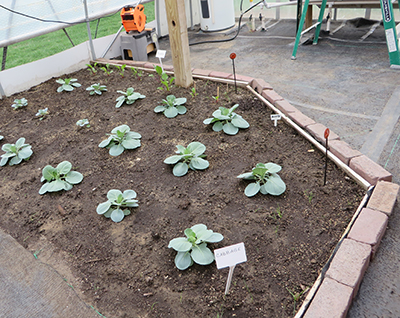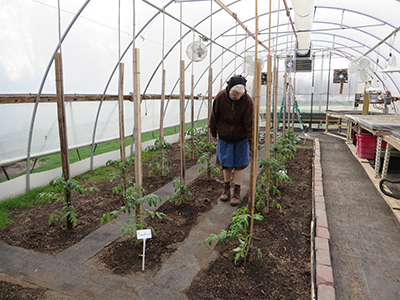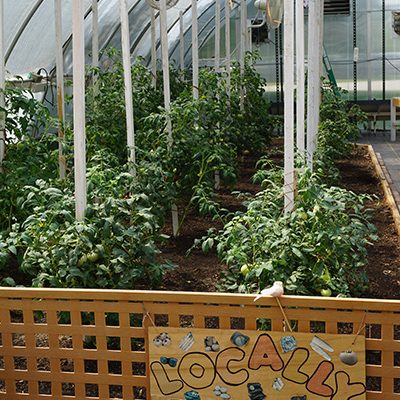Changing the way people think about growing food in northwest Ohio.
Since 1992, the Sylvania Franciscans have grown fruits and vegetables and donated them to the Helping Hands of St. Louis soup kitchen on the eastside of Toledo. Unfortunately, their summer garden only produced fresh produce for three or four months out of the year, and hunger is a 12-month problem.
In 2008 Sister Jeremias Stinson and Sister Grace Ellen Urban, who are responsible for environmental stewardship, gardens, shrines and woodland management for the Sisters of St. Francis, sought a method to remedy this limited growing period on the motherhouse grounds in Sylvania.
To accomplish this goal they built a polyhouse—a plastic greenhouse—and figured out how to make it feel like it was summer inside all year long. To make that happen, they developed an innovative system to keep the ground and air at 70 degrees, the optimum temperature necessary for germinating seeds and growing plants.
Since then, the Sylvania Franciscans have a year-round growing season and are the only organization in the United States to develop the technology to successfully grow food year round in the ground in a four-season climate. Their crops range from tomatoes, cabbage, lettuce, and broccoli to cucumbers, beets, spinach, and carrots. In 2010, the Sisters harvested 600 pounds of tomatoes from 24 plants during a growing season that lasted from December until August. Their year-round growing technique, documented by meticulous record-keeping, has been recognized by the U. S. Department of Agriculture.
How to grow food year round.
There are three essential components in a year-round garden: soil, water, and air. The key factor to successful growing is to keep these three elements consistently at 70 degrees. The Sisters constructed a 20’ x 48’ polyhouse using two layers of four-mil plastic. Insulation panels were placed two feet below the surface around the building to keep frost out in the winter. The ground in the polyhouse has a grid of 1″ PVC piping 16 inches below the surface. Water is brought from a well and runs through a solar panel system to heat it to 70 degrees and is constantly pumped through the piping to keep the soil at the optimum growing temperature. Heated well water is also used to water the plants. You can read the full step-by-step instructions here.
Circulation and ventilation are also important factors. It is critical that the air temperature stay in the 70 to 80 degree range throughout the whole structure. Fans have been installed to move the air around to accomplish that goal. A ventilation fan has been installed to release air if it gets above 80 degrees.
Because the sun doesn’t always shine on northwest Ohio, a hot-water tank has been installed to supplement the solar panels on cloudy days to ensure that the water heating the ground is always at 70 degrees. A gas heater is used to keep the air temperature at 70 degrees on cloudy days.
Why build a year-round garden?
Part of the mission of the Sisters of St. Francis of Sylvania, Ohio is to “embrace the poor and marginalized.” One way they do that is to help feed those who don’t have the financial wherewithal to feed themselves. The Sylvania Franciscans started with a summer garden for the poor, but since hunger isn’t a seasonal problem they looked for ways to grow produce all year long.
“The polyhouse allows us to grow crops in the ground all year,” said Sister Jeremias, “and that helps us fulfill our mission as Franciscans. Now that we have successfully used this technology for three years we want to share what we have learned with individuals, farmers, schools and universities, and church and community groups, so they too can begin using this technique to grow food year round in northwest Ohio.”
Sharing what we have learned with the community.
For more information on this unique technique to grow food 12 months of the year in a place where winters bring freezing temperatures and snow on the ground, contact Sister Jeremias Stinson at 419-824-3623.
















